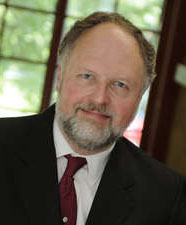Printed in the Summer 2018 issue of Quest magazine.
Citation: Smoley, Richard, "From the Editor's Desk" Quest 106:3, pg 2
 It says so in the Bible: “God is light” (1 John 1:5). As with “God is love,” we hear this statement and agree to it unthinkingly.
It says so in the Bible: “God is light” (1 John 1:5). As with “God is love,” we hear this statement and agree to it unthinkingly.
God is light? Really? Does that mean that when you go into a room and flip a switch, you are turning on God? Does God travel at 186,000 miles per second? This seems unlikely. Yet mystics often experience the divine as what Walt Whitman calls “ineffable light—light, rare, untellable, lighting the very light—beyond all signs, descriptions, languages.”
A verse from the Qur’an leaves a similar impression: “God is the Light of the heavens and the earth. The parable of His Light is a niche, wherein is a lamp. The lamp is in a glass. The glass is as a shining star kindled from a blessed olive tree, neither of the East nor of the West. Its oil would well-nigh shine forth, even if no fire had touched it. Light upon light” (24:35). Indeed, an-Nur, “the Light,” is one of the ninety-nine names of God in Islam.
These quotations evoke a mystery—“lighting the very light;” “light upon light.” Both Whitman and the Qur’an seem to be saying that there are two lights. One, we can assume, is the physical light that we all know. But then there is the other light, which is the light of God. What’s the difference?
Henri Coton-Alvart, a French alchemist, has some striking insights into the relation of spiritual light to physical light. He writes, “These regions, whose extent is the order of magnitude that we attribute to the atom or the neutron, are . . . places devoid of light, in which nothingness, the spirit of negation, rules exclusively. That is the root of matter. . . . I am saying that matter is nonlight” (emphasis Coton-Alvart’s). This quote is taken from his book Les deux lumières (“The Two Lights”), and these are the two lights he is speaking of. Indeed Coton-Alvart refers to matter as the koilon, from the Greek word for “hollow.” It is, so to speak, a place from which the divine light is absent. This is the basis of physical sight, which is paradoxically a kind of blindness.
What, then, produces this darkness that lies behind physical light, and hides spiritual light? One answer comes from the mystical treatise The Cloud of Unknowing. I will quote it in the original fourteenth-century English:
For when I sey derknes, I mene a lackyng of knowyng; as alle that thing that thou knowest not, or elles that thou hast forgetyn, it is derk to thee, for thou seest it not with thi goostly [mental] ighe. And for this skile it is not clepid a cloude of the eire, bot a cloude of unknowyng, that is bitwix thee and thi God.
To pierce this darkness, the anonymous author of this treatise recommends a kind of meditation, using a word such as God or love: “With this worde thou schalt bete on this cloude and this derknes aboven thee. With this worde thou schalt smite doun al maner thought under the cloude of forgeting.”
So we have the familiar light of this world—which does not illumine as much as we like to think—a light beyond, and “a cloude of forgeting” that separates the two. Maybe it would be better to call it a cloud of oblivion. A Course in Miracles connects it with fear:
The circle of fear lies just below the level the body sees, and seems to be the foundation on which the world is based. Here are all the illusions, all the twisted thoughts, all the insane attacks, the fury, the vengeance and betrayal that were made to keep the guilt in place, so that the world could rise from it and keep it hidden.
Sometimes this cloud, this “circle of fear,” is cleared away, whether in meditative practice or by the spontaneous arising of mystical insight, which may only last a few seconds but gives the unforgettable vision of a world that is both quite alien and much more real than our own.
It would take some discussion to say what this world beyond is, and no sooner does one begin than one realizes that the discussion does little more than make the clouds thicker. But there is one insight that may be useful.
Tibetan Buddhism speaks of the “Clear Light.” This must mean, again, a light different from the one we see, because we can see physical light, at least under certain circumstances. The Clear Light, however, is transparent. What could it be?
I would like to suggest that this Clear Light is connected with consciousness. Consciousness is not like physical sight, at least not entirely. Physical sight requires three things: a subject, an object seen, and light to see it in. If only the first two are present, one sees nothing.
With consciousness, it is not so. If you are aware of something, that very awareness is both the seeing and the medium by which it is seen. You can see an image in your mind’s eye even if the room is completely dark. (In fact it is often easier then.)
Is it possible that consciousness, in its purest, most transcendent form, is the “light upon light” of which the mystical texts speak? I doubt that this is the whole answer. But perhaps this insight may help us strike at the cloud of unknowing and penetrate more deeply to the mystery of mind that is beyond it.
Richard Smoley

